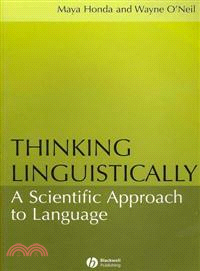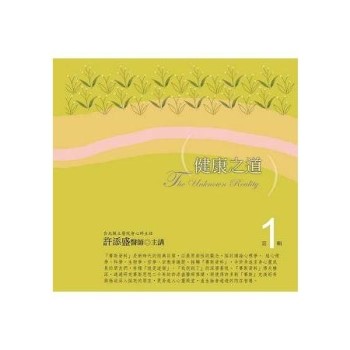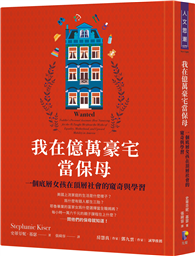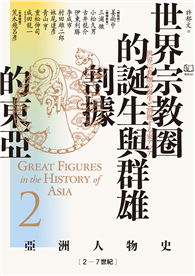| FindBook |
有 1 項符合
THINKING LINGUISTICALLY的圖書 |
| 圖書館借閱 |
| 國家圖書館 | 全國圖書書目資訊網 | 國立公共資訊圖書館 | 電子書服務平台 | MetaCat 跨館整合查詢 |
| 臺北市立圖書館 | 新北市立圖書館 | 基隆市公共圖書館 | 桃園市立圖書館 | 新竹縣公共圖書館 |
| 苗栗縣立圖書館 | 臺中市立圖書館 | 彰化縣公共圖書館 | 南投縣文化局 | 雲林縣公共圖書館 |
| 嘉義縣圖書館 | 臺南市立圖書館 | 高雄市立圖書館 | 屏東縣公共圖書館 | 宜蘭縣公共圖書館 |
| 花蓮縣文化局 | 臺東縣文化處 |
|
|
- 圖書簡介
Thinking Linguistically is a unique and clearly written introduction to the nature of linguistic analysis and issues in language acquisition. The book is for undergraduate and graduate students in linguistics, education, and psychology.
Through twenty problem sets, based in languages not only from the Americas but from other continents as well, Thinking Linguistically:
‧ Initiates students to the linguists' way of observing and analyzing data by making the methods and the process of inquiry visible and accessible.
‧ Engages students in analyzing the breadth and depth of two phenomena in a variety of languages—the expression of noun phrase plurality and the formation of questions.
‧ Integrates analysis of these phenomena with results from first and second language acquisition research.
‧ Emphasizes the interface between phonology, morphology, syntax, and semantics.
‧ Exemplifies how linguistic analysis can be used for the teaching of critical thinking, problem solving, and the nature of scientific inquiry in general.
‧ Is ideal for future language teachers for understanding acquisition and linguistic phenomena - 作者簡介
Maya Honda is Associate Professor of Human Development at Wheelock College. Her work includes Understanding First and Second Language Acquisition (with Wayne O'Neil, 2004) and papers in Noam Chomsky: Critical Assessments (1994) and The View from Building 20 (1993).
Wayne O'Neil is Professor of Linguistics at MIT. His publications include The Generative Study of Second Language Acquisition (edited with Suzanne Flynn and Gita Martohardjono, 1998) and Image, Language, Brain (edited with Alec Marantz and Yasushi Miyashita, 2000). - 名人/編輯推薦
"If you are a veteran linguist or linguistics teacher, this book will propel you back to what first captivated you about linguistic inquiry. If you are new to the field, this textbook is a delightful laboratory manual for thinking linguistically." (The Modern Language Journal, autumn 2010)
“The authors skillfully engage readers in doing linguistics as a kind of scientific inquiry. An elegant demonstration of the steps in identifying patterns, formulating and testing hypotheses, and offering parsimonious descriptions and explanations.”
Walt Wolfram, North Carolina State University
“Honda and O’Neil have taught linguistics at the center and on the periphery, to grade schoolers, teachers, and graduate students: always theoretical, always understandable, always useful. These unique materials show that the study of English and of every other language can be a science accessible to all.”
Nigel Fabb, University of Strathclyde - 目次
Preface.
Typographical Conventions.
An Introduction to Thinking Linguistically.
Problem Set 1. Plural Noun Formation in Armenian.
Part I: Noun Pluralization, or How to Talk About More than Two Dogs in Kiowa.
1. Noun Pluralization: An Introduction.
Problem Set 2. Plural Noun Formation in English.
2. Noun Pluralization: The Role of Phonology.
Problem Set 2, Revisited: Plural Noun Formation in English.
3. Noun Pluralization: Morphology Meets Phonology.
Problem Set 3. Regular-Irregular Noun Plurals in English.
Problems Set 4. Past Tense Formation in Englsih.
Problem Set 5. Plural Noun Formation in Spanish.
Problem Set 6. Plural Noun Formation in Brazilian Portuguese.
4. The Acquisition of Morphophonology.
5. Noun Pluralization: Morphology Meets Syntax and Meaning.
Problem Set 7. Plural Noun Formation in Nicaraguan English.
6. Noun Pluralization: The Interaction of Linguistic Features.
Problem Set 8. Plural Noun Formation in Mandarin Chinese.
Problem Set 9. Plural Noun Formation in Cherokee.
7. Noun Pluralization: A Summary.
Part II: Question Formation, or How to Find Out Whether the Cat Is Sleeping in Tohono O'odham.
8. Merge.
Problem Set 10. Merging, Transforming, and Converging.
9. An Introduction to the Syntax of Question Formation.
Problem Set 11. WH-Question Formation in Mandarin Chinese.
10. Syntactic Movement and Question Formation.
Problem Set 12. Yes/No Question Formation in Tohono O'odham.
Problem Set 13. WH-Question Formation in English.
Problem Set 14. WH-Question Formation in Brazilian Portuguese.
11. Question Formation: A Summary.
Problem Set 15. WH-Question Formation in Tohono O'odham.
12. Acquisition of WH-Question Formation.
Problem Set 16. Indonesian Speakers' Acquisition of English WH-Question Formation.
Part III: Constraints, or Why You Can't Say Wanna Whenever You Wanna.
13. Syntactic Constraints on Contraction in English.
Problem Set 17. The Syntax of Wanna-Contraction in English.
Problem Set 18. The Syntax of Is-Contraction in English.
14. Contraction in English: Its Acquisition and Related Topics.
Part IV: Meaning, and -- Finally -- about Counting Dogs in Kiowa.
15. Meaning: An Introduction.
16. Beyond Pluralization: Inversion and Noun Modification in Kiowa.
Problem Set 19. So How Do Kiowas Talk About More Than Two Dogs?.
17. Argument Structure: The Conceptual System of Language.
Problem Set 20. Theta-Roles in Prepositions in English.
On Thinking Linguistically: Looking Back and Looking Ahead.
References.
Index.
|











